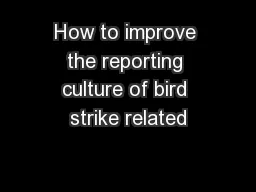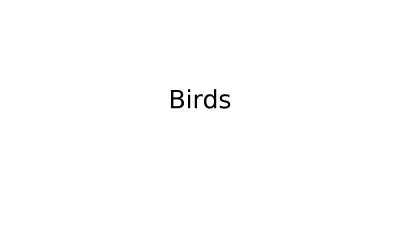PPT-How to improve the reporting culture of bird strike related
Author : conchita-marotz | Published Date : 2017-12-15
A review of regulatory systems in the EU and North America Lukas Rudari Lauren A Sperlak Robert C Geske and Dr ChienTsung Lu Purdue University Abstract One of the
Presentation Embed Code
Download Presentation
Download Presentation The PPT/PDF document "How to improve the reporting culture of ..." is the property of its rightful owner. Permission is granted to download and print the materials on this website for personal, non-commercial use only, and to display it on your personal computer provided you do not modify the materials and that you retain all copyright notices contained in the materials. By downloading content from our website, you accept the terms of this agreement.
How to improve the reporting culture of bird strike related: Transcript
Download Rules Of Document
"How to improve the reporting culture of bird strike related"The content belongs to its owner. You may download and print it for personal use, without modification, and keep all copyright notices. By downloading, you agree to these terms.
Related Documents














